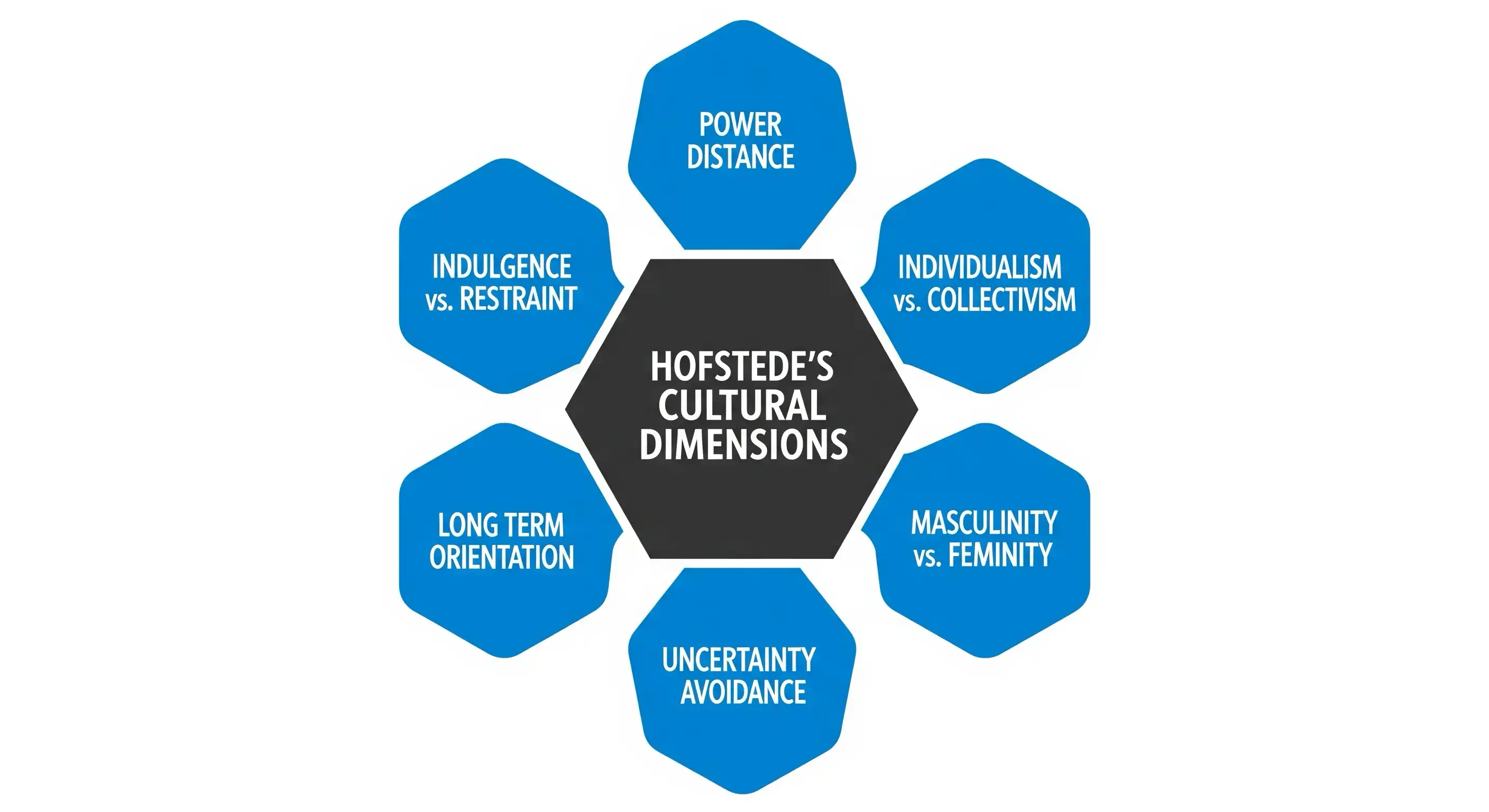
Decoding Corporate DNA: A Cultural Analysis of MedInnovate Corp.
When an organization consistently misses deadlines, stifles innovation, and suffers from deep internal friction, the root causes are rarely superficial. While operational inefficiencies and flawed processes are easy to spot, they are often just symptoms of a much deeper issue: a dysfunctional organizational culture. To truly transform a company like MedInnovate Corp., a medical device enterprise caught in a state of systemic gridlock, it is essential to first decode its cultural DNA.
To achieve this, we employed Hofstede’s Cultural Dimensions Theory, a renowned framework for understanding the deep-seated values that drive behavior. By applying this lens to our Excellence Assessment findings, we moved beyond the symptoms—such as siloed teams and brittle tooling—to diagnose the underlying cultural "source code" that dictates how MedInnovate operates. The results paint a stark picture of a culture perfectly designed for the problems it faces and provide a clear, evidence-based guide for how to architect a successful transformation.

MedInnovate's Cultural Dimensions: A Blueprint for Dysfunction
The assessment revealed a culture profoundly misaligned with the demands of a modern, agile enterprise. Each of Hofstede's dimensions tells a part of the story.
1. High Power Distance: The Unquestioned Hierarchy
Power Distance is the degree to which less powerful members accept that power is distributed unequally. MedInnovate operates with an extremely high Power Distance, where authority is concentrated, centralized, and rarely challenged.
- The organization is defined by its "top-heavy hierarchical structure" and a "command-and-control leadership style" that restricts autonomy.
- This creates a climate of fear, where team members are reluctant to "speak up during meetings or propose creative ideas."
- Power is often wielded by detached leaders or technical experts who can unilaterally impose decisions, overriding formal roles.
This cultural trait ensures that vital feedback from the operational level never reaches decision-makers, reinforcing a system of passive obedience over proactive problem-solving.
2. Very High Uncertainty Avoidance: The Paralysis of Compliance
Uncertainty Avoidance measures a culture's tolerance for ambiguity. MedInnovate exhibits a powerful and debilitating need to avoid uncertainty at all costs, leading to a culture paralyzed by its own rules.
- The culture is fundamentally "risk-averse," with a "relentless focus on compliance above everything else."
- This manifests in a "checkbox mentality" and rigid adherence to a "very bureaucratic" QMS that "is inhibiting fast-paced innovation."
- Experimentation is actively discouraged, and teams are forced to use cumbersome, hardware-centric processes because they are familiar and prescribed, not because they are effective.
This desperate attempt to control the future with rules has ironically made the organization incapable of adapting to it.
3. Dysfunctional In-Group Collectivism: The War of the Silos
This dimension explores the balance between individual goals and group loyalty. At MedInnovate, loyalty is not directed toward the company's mission but is fiercely guarded within functional silos and geographic locations.
- The enterprise is defined by "functional silos" and "power battles and politics between locations and functions."
- This has devolved into "active sabotage" of cross-functional initiatives and a pervasive "blaming culture."
- Teams are primarily focused on "protecting their own interests" rather than achieving broader organizational objectives.
This fracturing of the organization into competing tribes makes true collaboration impossible.
4. High Masculinity: The Competitive Internal Battlefield
Masculine cultures prioritize assertiveness and competition. At MedInnovate, these traits are turned inward, creating a highly competitive and often toxic internal battlefield.
- The daily reality is shaped by "power battles," "finger-pointing and blame-shifting," and "unresolved conflicts."
- Assertive individuals can dominate the culture, creating an environment where collaboration is seen as weakness.
- Success is often measured by winning internal struggles, not by contributing to a shared success.
5. Strong Short-Term Orientation: The Tyranny of the Urgent
This dimension reflects a culture's focus on the future versus the present. MedInnovate is overwhelmingly oriented toward the short term, prioritizing immediate deliverables over long-term health.
- The company operates with a "project mindset," focusing on "short-term deliverables" rather than a "product mindset that prioritizes long-term vision."
- Teams work reactively, "responding to only near-term project needs."
- Marketing and finance demand "certainty, upfront planning, and rigorous scheduling," which clashes with the needs of iterative development.
6. High Restraint: The Culture of Fear
This dimension contrasts cultures that allow free expression with those that suppress it. MedInnovate is a culture of High Restraint, driven by fear and control.
- A "general feeling of distrust and fear of failure" permeates the organization.
- Employees are "afraid of punitive measures," which prevents them from taking risks or challenging the status quo.
- The overwhelming emphasis on compliance and rigid processes functions as a powerful social norm that suppresses creativity.
This restrained environment is directly responsible for the widespread employee disengagement.
Conclusion: From Diagnosis to a Tailored Transformation
The Hofstede analysis reveals that MedInnovate’s problems are not a collection of isolated issues; they are the result of a deeply interconnected and self-reinforcing cultural system. High Power Distance and High Uncertainty Avoidance create a rigid bureaucracy. Dysfunctional Collectivism and High Masculinity fuel political infighting. This entire system is locked into a Short-Term, Restrained mindset that prevents any possibility of organic change.
This diagnosis was critical because it proved that a standard, process-first transformation would be rejected by the organization's cultural immune system. Our proposed approach, therefore, had to be a direct countermeasure to these cultural dimensions:
- To combat High Power Distance and Restraint, we recommended a "parallel" team-based organization and a shift to centre-out leadership to distribute authority and create psychological safety.
- To address High Uncertainty Avoidance, our approach uses a Hybrid Stage-Gated-Agile model and minimalistic processes to provide new, clearer rules that still enable agility.
- To dismantle Dysfunctional In-Group Collectivism, our strategy realigns the organization around value-stream aligned teams to break old loyalties and forge new ones focused on customer value.
- To counter the Short-Term Orientation, we prescribed a formal Product Management layer and a shift to product-based funding to force a long-term view.
Understanding the cultural DNA of MedInnovate was not an academic exercise. It was the essential diagnostic step that allowed us to design a transformation journey that addresses the true root causes of dysfunction, moving it from a state of gridlock to one of sustained agility and excellence.